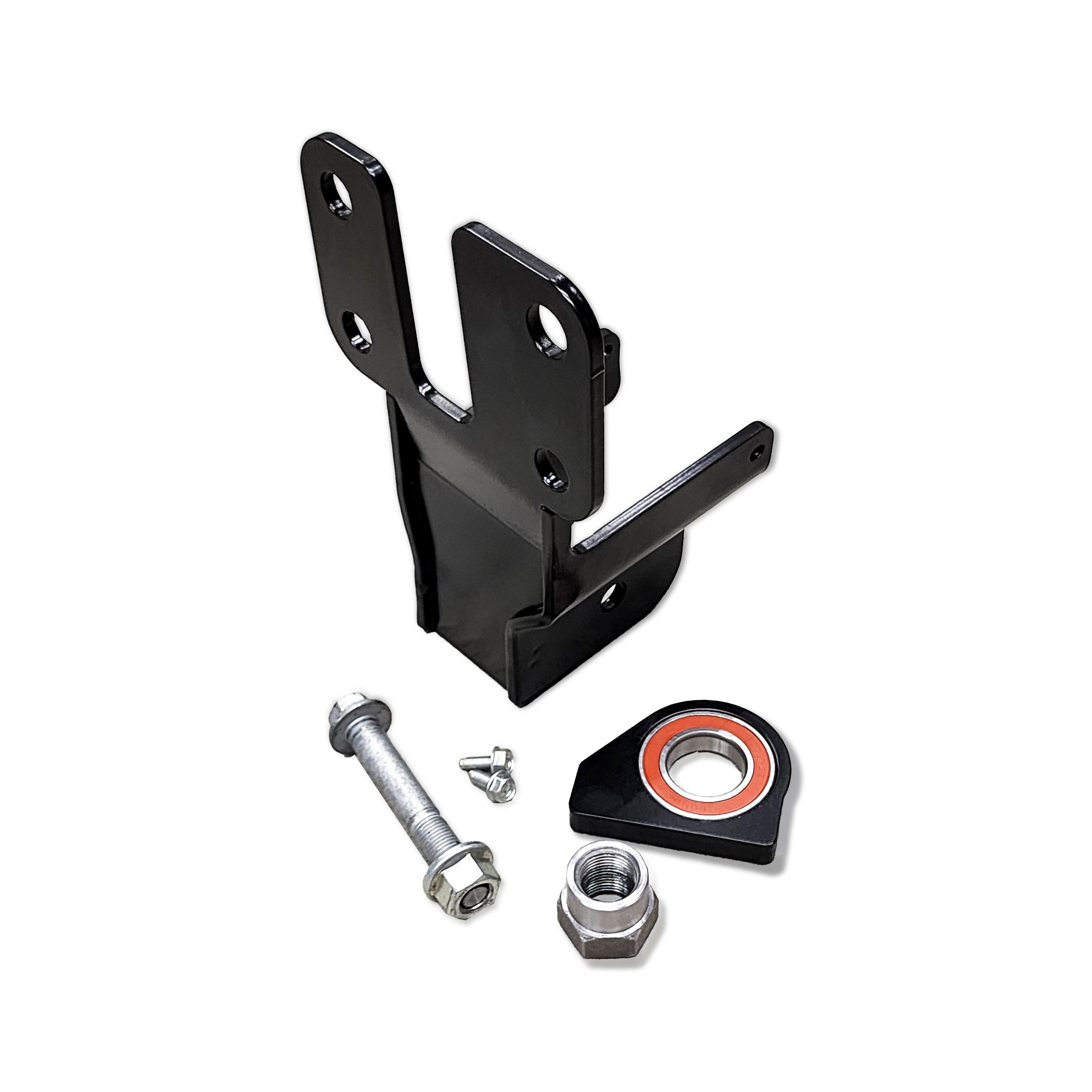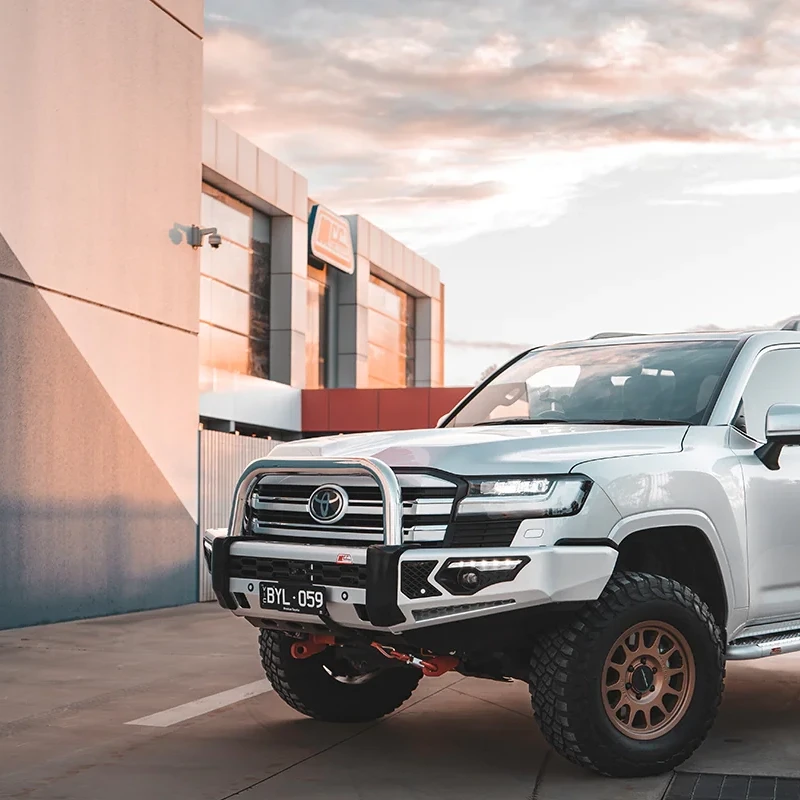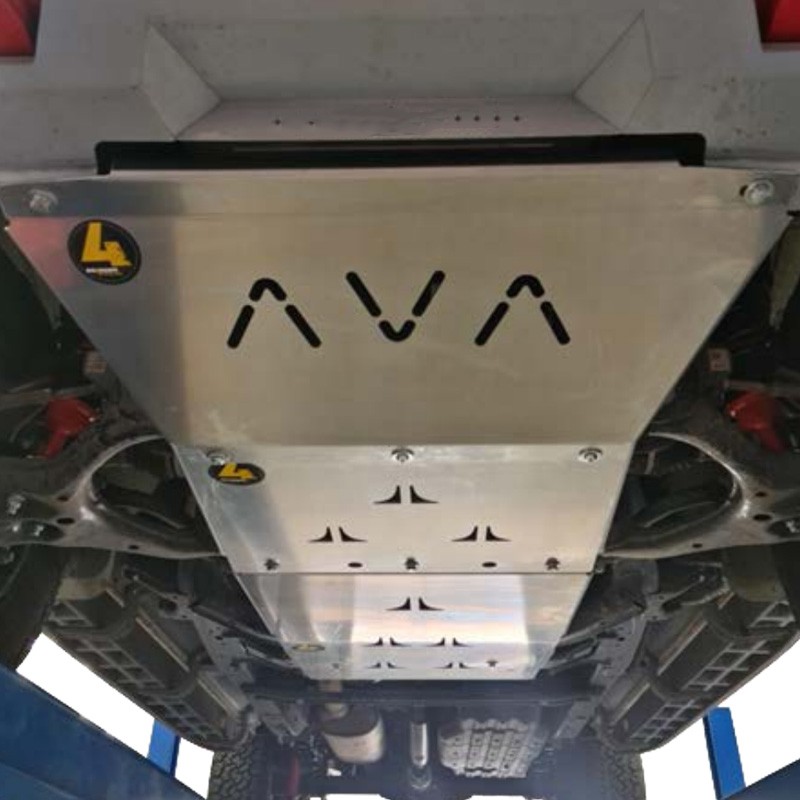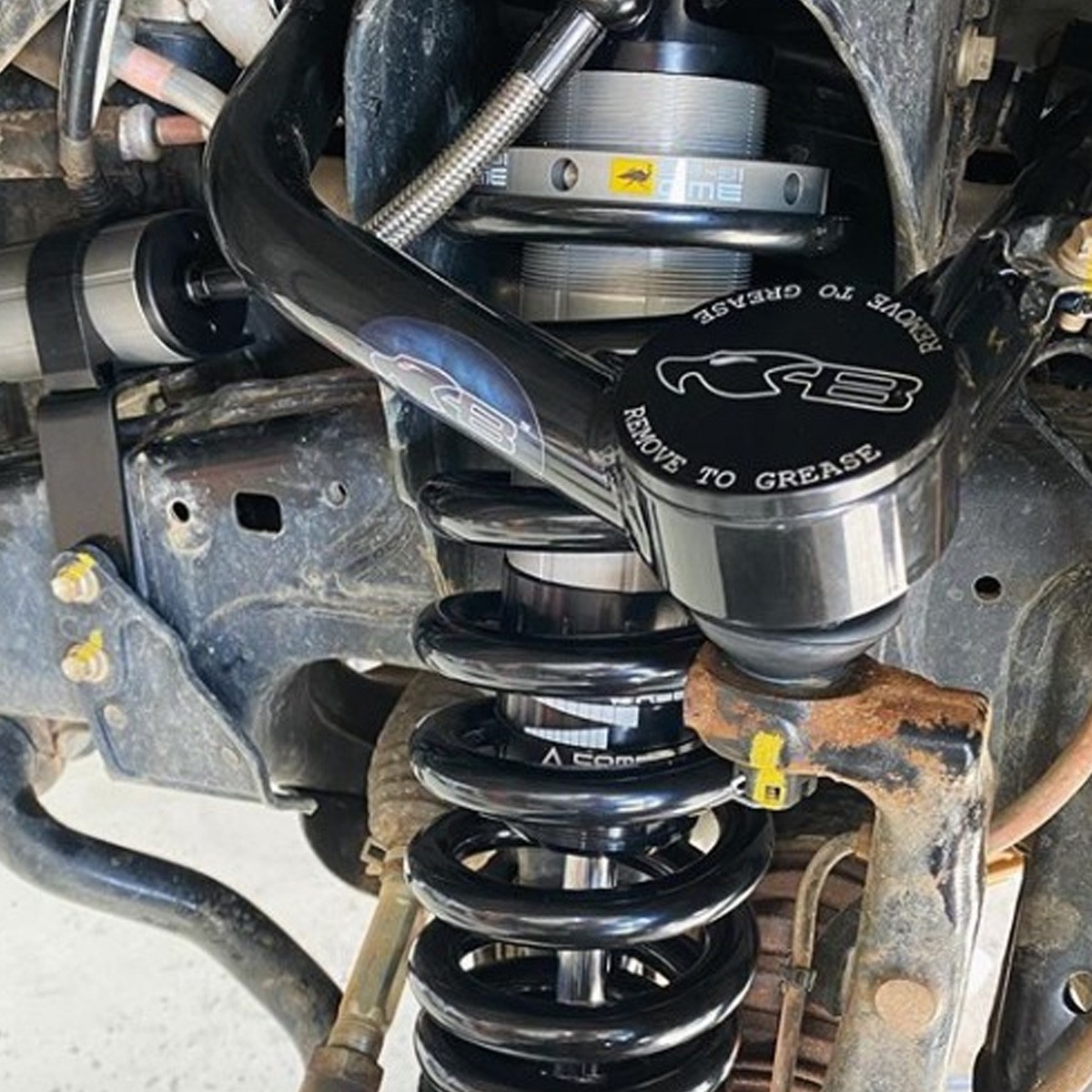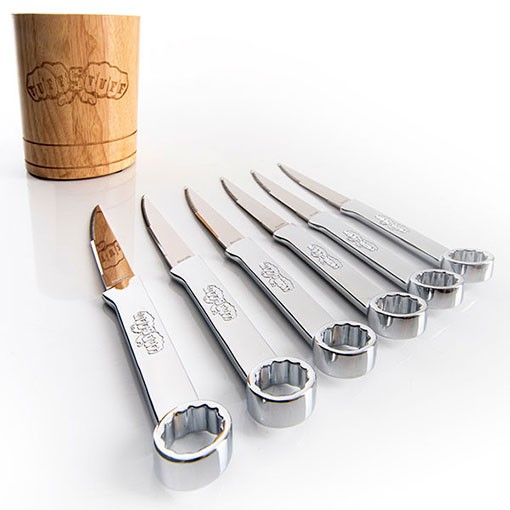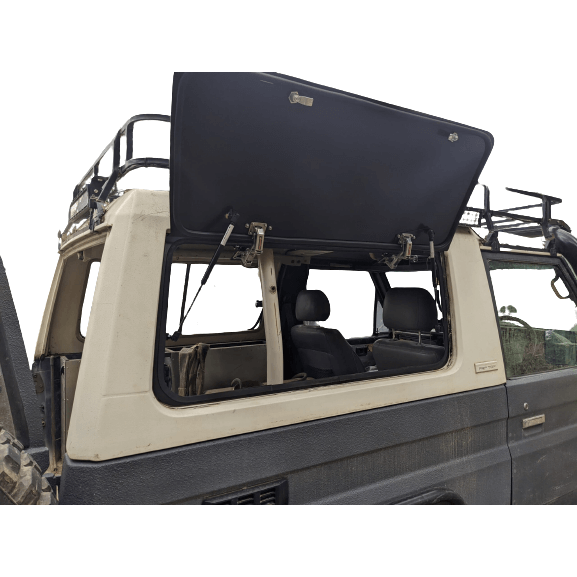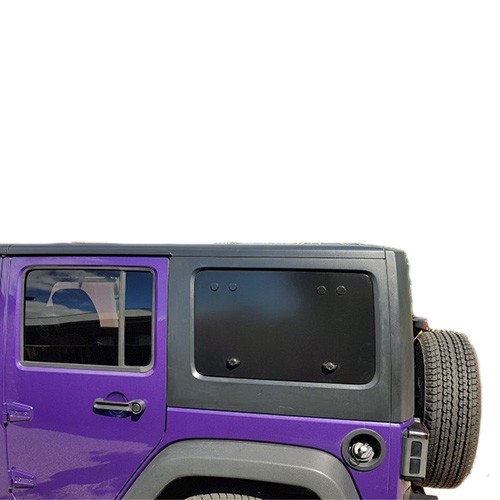Prevent & Fix Death Wobble in your 2007-2020 Jeep Wrangler
One of the most talked about modified Jeep Wrangler issues on the internet is the concept of "Death Wobble". If you’re
experiencing death wobble in your Jeep JK Wrangler, you’re not alone.
These issues can be caused by a variety of factors, including loose bolts, damaged components, improper installation, tire balance,
alignment, and worn suspension components. Fortunately, diagnosing and fixing these issues is relatively straightforward.
The primary origins of severe Death Wobble incidents typically include:
- Inadequately torqued trackbar bolts.
- Damaged or worn out trackbar and control arm bushings.
- Oval or wallowed out trackbar mounting bracket holes.
For an immediate fix to most track bar related Death Wobble issues, check out the Tough Toys Track Bar Reinforcement & Sector Shaft Brace kit.
Tires that are not balanced correctly, excessive tire pressure, wheels that are bent, incorrectly installed wheel spacers, damaged tires with separated layers, and improper alignment specifications (such as caster, camber, and insufficient toe-in) can result in wobbles and shimmies that trigger the occurrence of Death Wobble. However, it's important to note that while these factors may trigger Death Wobble, they are not its underlying cause.
Although it is always a good idea to inspect your axle shaft and drive shaft uni-joints, they are not the cause of Death Wobble.
This article assumes that the vehicle has a correct wheel alignment and that caster and geometry have been corrected with adjustable control arms or a geometry bracket kit.
What is death wobble?
Death wobble is a condition that occurs in the front suspension of vehicles, which causes sudden and violent vibrations. It is most commonly observed in solid front axle suspensions but can also occur in independent front suspensions. The shaking in the steering wheel increases or decreases with speed and can cause shaking throughout the cab. Death wobble is a dangerous scenario and speed must be reduced to an almost stop before the death wobble event will subside.
The video below shows a JK Wrangler with an extreme case of death wobble.(Courtesy of Rare Parts).
Understanding Suspension Components
It's important to understand the name and function of each of the steering and suspension components under the front end of your Jeep. The
diagram below (Courtesy of Wayalife) shows the different components identified. These names will be used to identify the
components in the rest of this article. Note the picture is of a left hand drive vehicle and Australian Jeeps will have
everything reversed.

Sway Bar
The sway bar, also known as a stabilizer bar or anti-roll bar, is an essential component of the Jeep JK Wrangler’s suspension system. It is a spring-like device that connects the left and right sides of the suspension to reduce body roll and improve stability during cornering. The sway bar works by transferring the weight of the vehicle (through the sway bar links) from one side to the other through the differential housing to the chassis, which helps to keep the vehicle level and prevent it from tipping over. It can also be disconnected via the optional electronic sway bar disconnect featured in Rubicon trim JK Wranglers to allow more articulation for rock crawling.
Pitman Arm
The pitman arm connects the steering gearbox to the drag link, which is responsible for turning the wheels. When you turn the steering wheel, the pitman arm moves, and the drag link transfers that motion to the steering knuckle or tie rod, which then turns the wheels. The pitman arm is also responsible for maintaining the correct steering geometry and ensuring that the wheels turn in the correct direction.
Drag Link
The drag link connects the pitman arm on the steering box to the steering knuckle or tie rod. When you turn the steering wheel, the pitman arm moves, and the drag link transfers that motion to the steering knuckle or tie rod, which then turns the wheels. The drag link is responsible for ensuring that the wheels turn in the correct direction and that the steering is responsive and accurate. The drag link is adjustable to allow the steering wheel to be adjusted to a straight position when driving in a straight line.
To straighten your steering wheel, you can loosen the two nuts on the sleeve/turnbuckle on the drag link and rotate the sleeve/turnbuckle to adjust the length of the drag link. If either ball joint end of the drag link is worn or has play in it, it can cause a wobble or shimmy, but not Death Wobble.
Replace or repair any components that have play or damage in the drag link. Aftermarket drag links are often a lot stronger and less prone to damage than the factory Jeep component.
Tie Rod
The front tie rod is as the name suggests, the rod that ties together the two steering knuckles. This rod takes the steering input from the drag link and connects it to the steering knuckle on the opposite side. The vehicle toe is adjusted using this tie rod when taking your Jeep for a wheel alignment.
If either ball joint at the ends of the tie rod have play in them, it can cause a shimmy (not Death Wobble). A common place for the tie rod to be damaged is on the driver’s side at the adjusting sleeve (in the picture, just to the right of the red swaybar link). The adjusting sleeve allows the width of the tie rod to be expanded or contracted to adjust the toe in a wheel alignment. There are threads on that end that can be damaged, causing play on that driver’s side and allowing an up-and-down or circular play movement. This form of play would cause a shimmy.
Replace or repair any components that have play or damage in the tie rod. Aftermarket tie rods are often a lot stronger and less prone to damage than the factory Jeep component.
Upper & Lower Control Arms
The upper control arms and lower control arms on the front of a JK Wrangler are responsible for keeping the differential housing in the correct position (front to back) and maintaining the correct caster angle throughout the suspension travel. These arms link the differential housing to the chassis and prevent unwanted forward and back movement of the differential. After market control arms are adjustable to allow the caster angle to be adjusted after a lift kit is installed.
The bushings in the upper and lower control arms must be checked for cracks and ovaled inner sleeves. If there is any wear found, replace the bushings. This can be a cause of Death Wobble although it is fairly uncommon.
Track Bar
The track bar, sometimes called a panhard rod in Australia, is critical in controlling the side to side movement of the differential housing. This bar keeps the differential housing in line with the chassis in the left to right position. After market track bars are adjustable to allow the position of the differential to be changed when a lift kit is installed.
See below for why the track bar is the most common cause of death wobble on a Jeep Wrangler JK.
The Most Common Cause of Death Wobble
The track bar, track bar bushings, track bar bolts and the track bar mounting brackets are the most common cause of Death Wobble in a Jeep Wrangler JK.
Track Bar Bolts
When building the Jeep Wrangler JK, the manufacturer used an M14 fully threaded bolt to install the front track bar. These M14 bolts are installed through a mounting bracket at either end of the track bar (at the differential and at the chassis end).
The diameter of a fully threaded bolt is slightly less than the diameter of a bolt that has a shanked section. With a fully threaded bolt inside the mounting bracket and bushing inner sleeve, there is less surface area of contact which leads to a small amount of play from the factory. Over time, the thread chews into the mounting bracket and the inner sleeve of the bushing creating more play which leads to Death Wobble. See the below diagrams for comparison.


Track bar bushings
With the track bar removed, inspect the bushings found at both ends for cracks, wear and degrading. The fully threaded bolt may
have chewed into the insides of the bushing inner sleeve. If there is any sign of the bushing being worn or the inner sleeve being
ovaled (wallowed out), replace the bushings.

Track Bar mounting Brackets
Check the chassis of your jeep where you removed the track bar. If the mounting holes on the track bar mounting brackets are showing any sign of being ovaled or wallowed out, a repair must be made to return the hole to a circular shape.
The photo below is of a chassis track bar mount that has become ovaled (wallowed) out. This must be repaired to fix the Death Wobble scenario.

The photo below is of a differential track bar mount that has become torn off the vehicle (in an extreme case). This must be
repaired by welding on a stronger track bar mount.
.png)
Other Causes of Death Wobble
Upper & Lower Control Arm Bushings
As mentioned above, the upper and lower control arm bushings can be a cause of death wobble. These should be checked for play, cracks and wear to the inner sleeves. If any wear is found, replace the bushings.
In some circumstances, the control arms may have been replaced while installing a lift kit. If the installer has the vehicle on a hoist up in the air and then proceeds to torque down the upper and lower control arm bolts, the bushings will be clamped out of position when the vehicle is lowered off the hoist. This can lead to prematurely torn bushings.
The correct method is to torque the control arm mount bolts while the vehicle is on the ground.
Steering Box Sector Shaft Bearing
The output shaft on the steering box is known as the sector shaft. The sector shaft is what the pitman arm is bolted to with a very large nut. Inside the steering box at the bottom of the housing is a bearing that prevents the sector shaft from moving in any other direction other than rotating when you turn the steering wheel.
If your steering box has play left to right or front to back then it needs rebuilding or replacing. This is easily checked by
placing the vehicle on flat ground and having an assistant turn the steering wheel back and forth with the engine off. You will
see the sector shaft and pitman arm move in a direction that is not rotational.
In some extreme cases, the vehicle may experience too much load on the sector shaft and snap while off road.

Fixing Death Wobble
Thankfully there is a solution to all of the problems listed above, and the easiest fix is to install the Tough Toys Track Bar Reinforcement and Sector Shaft Brace kit.
By installing the bolt on 6mm thick steel Tough Toys - Track Bar Bracket Reinforcement & Sector Shaft Brace on your JK/ JKU you can
repair and reinforce the chassis-side track bar bracket and get back to off-roading sooner with the confidence that your steering
components are secure and stronger than OEM forgetting your worries about death wobble!
Using 6mm thick steel, the Tough Toys - Track Bar Bracket Reinforcement & Sector Shaft Brace is a bolt on solution to encompass the OEM
track bar bracket on the chassis of your JK/JKU Jeep Wrangler 2007-2018.
It serves two purposes:
The prevention or repair of oval (wallowed out) holes on the OEM chassis-side track bar bracket by providing a tight fit hole and partially threaded bolt with fully shanked section riding on both mounting holes. This is a common cause of what’s known as “death wobble”. The chassis track bar bracket is also reinforced for the extreme stress experienced when off-roading.
By utilizing a longer nut with shoulder for the sector shaft the design creates a double shear configuration when combined with a bearing installed in a block mounted under the steering box. This design enhances steering box longevity and stability, especially with larger tires.



